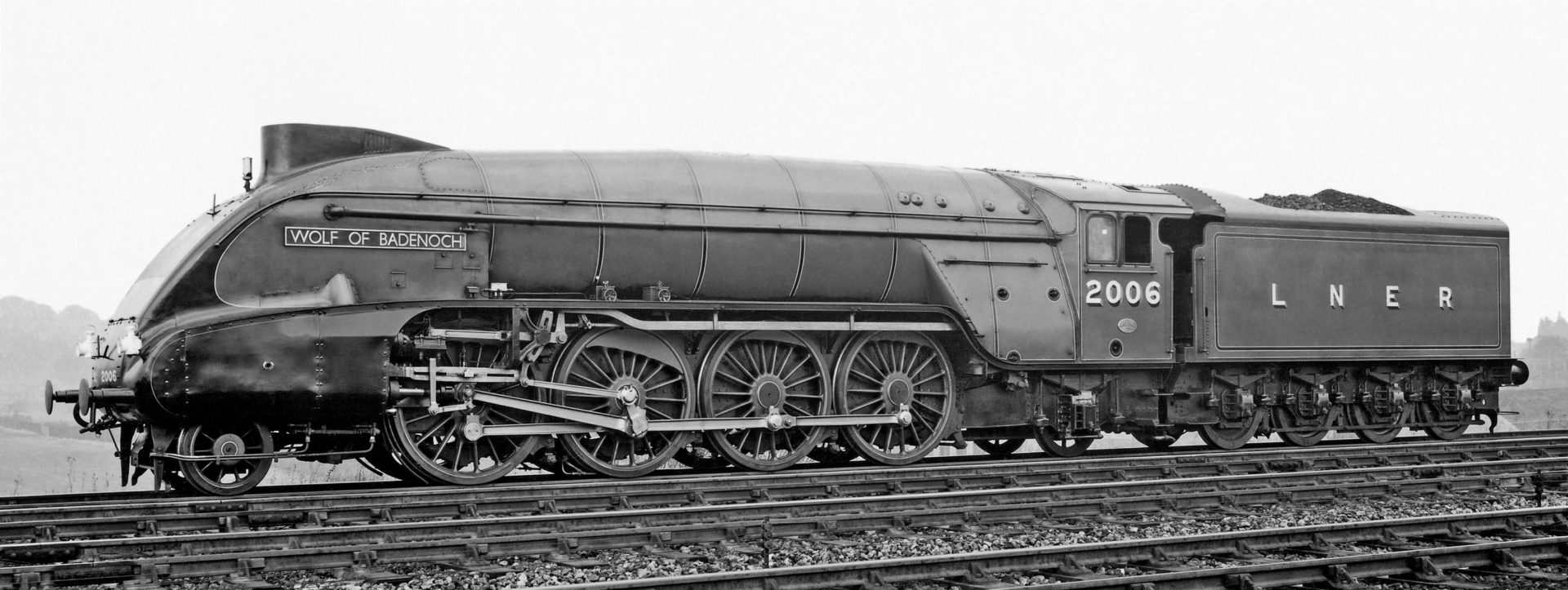The final member of the original P2 class entered traffic on the 5th September 1936. No. 2006 gained the name of Wolf of Badenoch and was given the works number 1842 . Like the other engines in the class the name was inspired by Scottish Folklore. The Wolf of Badenoch was the name given to Alexander Stewart the Earl of Buchan (1343-1405) the fourth son of King Robert II of Scotland who had earned the nickname after his ruthless treatment of his enemies and the burning down of Elgin Cathedral in 1390. Like the other engines in the last batch of P2s the locomotive featured a streamlined front end, Walscherts valve gear and piston valves.

Although it had originally been planned to fit the engine with an identical boiler to the other engines the decision was made to fit the engine with a new diagram 108 pattern boiler No. 8934. This boiler featured a larger combustion chamber to help complete total combustion and required the two tube plates to be placed further together. The engines originally ordered boiler was kept as a spare being utilised on No. 2002 when the latter’s own boiler was due for repairs. The inclusion of a larger combustion chamber was suggested by OVS Bulleid who calculated that moving the tubeplates 1ft closer together, and correspondingly making the combustion chamber 1ft longer would along with a larger air space in the fire grate incorporated in all the later P2’s and in the rebuilds of No. 2001 and No. 2002, would create total combustion. The enlarged firebox meant that three extra rows of roof stays were fitted along with five inspection doors on each side of the boiler. This boiler later became the prototype for the 118a boiler design which was used on Peppercorn’s A1 class locomotives.
From new the engine was allocated to Haymarket depot and seems to have been the only member of the P2 class not to venture south on the East Coast Main Line to King’s Cross during its life as a Mikado. Soon the engine was transferred to Aberdeen where it stayed until October 1942 when it returned to Haymarket. The engine did not have its own regular crews whilst in Aberdeen, instead being used as a general engine in the No. 1 Link who worked the passenger trains and No. 2 link who worked the fast fish and meat trains.
No. 2006 was withdrawn for rebuilding as a Pacific on the 28th January 1944 having completed 287,187 miles as a 2-8-2 locomotive. The rebuilt locomotive was released from Doncaster Works on the15th April but did not retain its original boiler which had instead been fitted to the rebuild of No. 2002. However this boiler only lasted in service a further 18 months before being condemned. The engine was fitted with boiler No. 8796 which had been fitted to No. 2002 and during its life as an A2/2 a received a further three different boilers.
After rebuilding the engine emerged in unlined black livery with NE only on the tender carrying the number 2006 on the cabside. Under the renumbering scheme the engine was renumbered 506 on the 30th June 1946 before being repainted into full Apple Green livery at Cowlairs in October 1947. During a light repair at Cowlairs in December 1948 the number was changed to 60506 using small figures closely spaced again on the cabside with ‘LNER’ remaining on the tender side until July 1950 when the engine was repainted in British Railways livery. Originally the engine re-entered traffic nameless, the original nameplates still attached to the now discarded streamlined front ends. however by early June 1944 the nameplates had been rescued, cleaned and replaced on the engine.
After rebuilding the engine returned to Haymarket shed where it remained until the 8th August 1949 when it was once again sent to Aberdeen Ferryhill. This lasted a year until the engine was again transferred to Haymarket before the move of the whole class south of the border with the engine becoming allocated to New England shed in November 1949. During a short period in early 1954 Grantham shed borrowed No. 60506 and No. 60504 and used the pair on the 10.00 hours ‘Flying Scotsman’ from King’s Cross. During its life as an A2/2 the engine accumulated 629,013 miles, finally being withdrawn and finally cut up at Doncaster Works on the 4th April 1961.